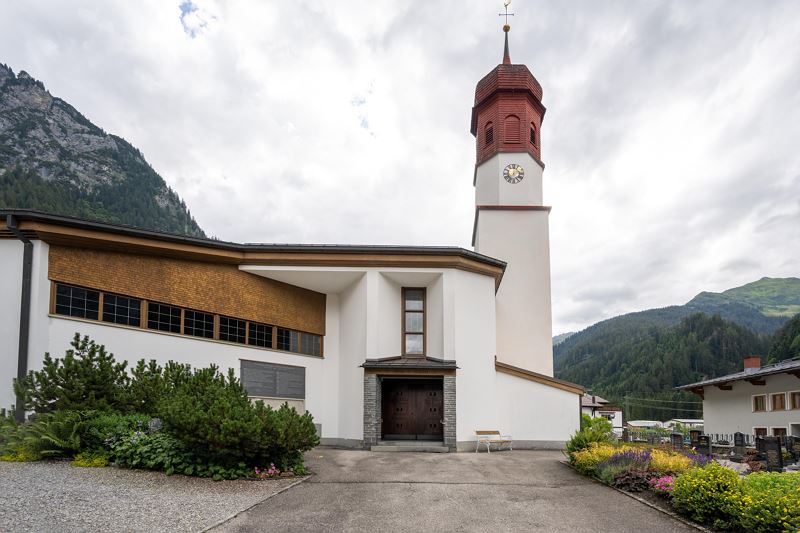Parish church of St. John the Baptist

Parish church of St. John the Baptist
6754 Klösterle am Arlberg, Klösterle 65a
Parish church of St. John the Baptist
The chapel and its belongings were transferred by Count Hugo I of Montfort to the Order of St. John with the requirement to build a hostel for passing travelers. This hostel, a so-called "Clösterlin", owes its name to the town and the Klostertal.
From the patron saint of St. John the Baptist we first learn in 1332. This is - as is quite clear - due to the activity of the Knights of St. John. The medieval church was replaced in 1609 by a baroque building of the Feldkirch Stadtmaurers Melchior Morscher. This church in turn had until 1974 inventory. The tower, which was built in 1660 with a baroque onion dome, has survived. Their baroque inventory was given to the "old" church of Klösterle in 1774, when new altars and a pulpit were purchased. Responsible for this was the then pastor Johann Josef Gaßner, who caused a sensation as an exorcist and miracle healer. The donations of those seeking help, he apparently used for the refurbishment of the church. Only the former cross altar is still in Klösterle, in the vestibule of the present church.
After the Second World War, the baroque church soon proved to be too small and, above all, very dilapidated. Over the years, it turned out that probably only a new building (with the exception of the old tower) could provide a remedy, including finally the Federal Monuments Office gave his consent. The only plan to tender for an architectural competition was presented by Prof. Clemens Holzmeister, who was almost 90 years old and who had ample experience in church construction. The octagonal church building according to his plans was eventually started in 1974. Two years later, the solemn consecration by Bishop DDr. Bruno Wechner.
Valuable inventory from the old church was also used in the newly built church. In addition to the aforementioned baroque altar, these were the linden wood sculpture of the Mother of God from around 1630 (which is attributed to the Feldkirch sculptor Erasmus Kern) and baroque representations of the twelve apostles and the Stations of the Cross. The organ is housed in a late Baroque housing from 1766, where the little putti and Posauengel were created by Imster sculptor Josef Klemens Wittwer. The Piéta, which has found its place on the eastern wall of the church, may have originated from his hand.



Parish church of St. John the Baptist
6754 Klösterle am Arlberg, Klösterle 65a